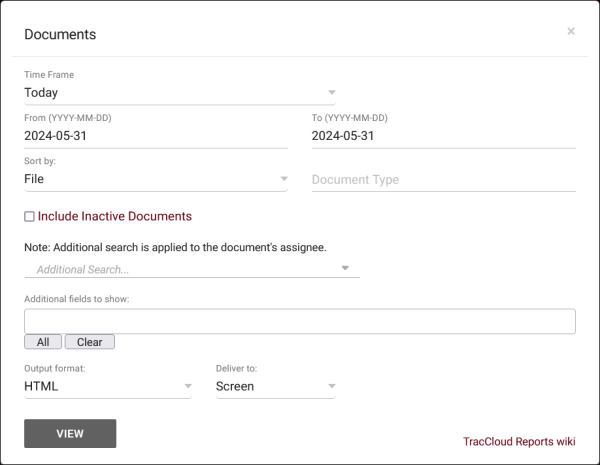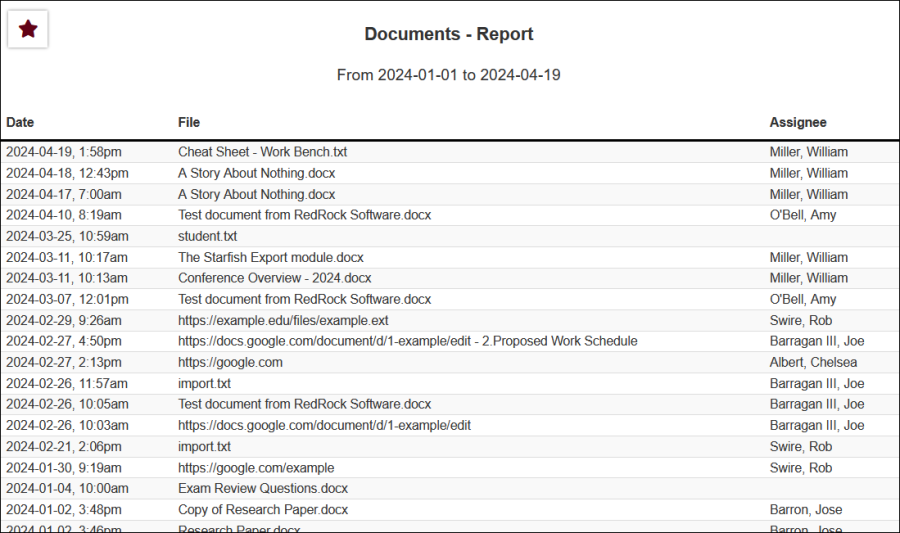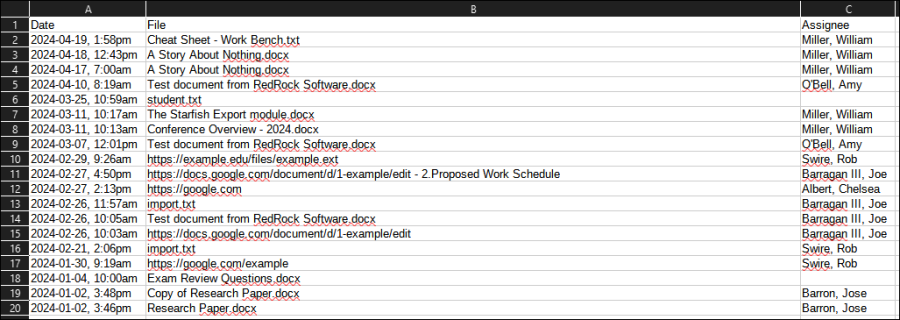TracCloud Report: Documents: Difference between revisions
From Redrock Wiki
No edit summary |
No edit summary |
||
| Line 7: | Line 7: | ||
<b><big>Documents</big></b> | <b><big>Documents</big></b> | ||
The <i>Documents</i> report, found in <i>Reports > Management</i>, will display a list of uploaded [[ | The <i>Documents</i> report, found in <i>Reports > Management</i>, will display a list of uploaded [[TracCloud:_Documents|documents]] with information about the file sorted by file name, assignee, date, document type, or who it was posted by.<br><br> | ||
[[File:1312621.png|600px]]<br> | [[File:1312621.png|600px]]<br> | ||
Revision as of 16:50, 15 November 2024
Management
• Consultant Non-Duplicated Visit Time
• Logins by Hour by Day of Week
• Students Visits Cleanup Data
Documents
The Documents report, found in Reports > Management, will display a list of uploaded documents with information about the file sorted by file name, assignee, date, document type, or who it was posted by.
- Time Frame
- The date range for the data in this report. Beyond entering a date range manually, you can also choose a preset date range (Today, This Month, This Semester, etc) from the dropdown list above.
- Sort by
- Choose how the selected data is sorted.
- Document Type
- Optionally filter results based on document type.
- Include Inactive Documents
- If checked, documents that have been deactivated will still be included in report results.
- Additional Search
- Filter your results by a selected field.
Use * as a wildcard (Subject: MAT*)
| as "or" (Major: Mathematics|Biology)
# as "Not" (Status: #Inactive)
&& as "And" (Major: #Mathematics&&#Biology)
blankornull as a keyword to find records where the field is blank (Reason: blankornull)
Multiple fields can be added to further narrow down your results.
- Filter your results by a selected field.
- Additional fields to show
- This can be used to add additional data fields to the report results. For example, you could use this to add a student's email address in a visit report.
- Output format
- Use HTML to view report data in your browser, or export this report to a CSV file (available for most reports). Some reports offer additional CSV options depending on if you want to include totals and/or data grouping in your export.
- Deliver to
- Display this report immediately in your browser ("Screen"), or send the report to a specified email address ("Email"). Multiple email addresses can be specified, use ; to separate them (example@example.edu;sample@example.edu).


